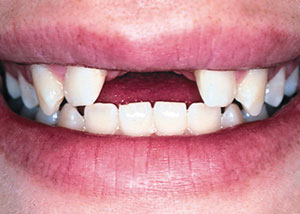THE ability of conventional measures of dental disease, which is standard for the global dental practitioners, is problematic. The most commonly used is the Decayed, Missing and Filled Teeth index (DMFT) to measure all aspects of oral health. DMFT is really a measure of dental history rather than of current dental health.
A patient’s teeth may be missing because of planned extractions due to overcrowding, may never have erupted or may have been lost because the patient had an accident.
Conventional dental measures such as the DMFT are based around professional judgments of the presence of disease, but there is a question about their reliability. The reliability of a measure is ascertained by asking at least two clinicians to examine patients independently. If both report the same results (i.e., they agree that a sign is either absent or present), then their measures are considered to be reliable. It is often assumed that all dentists would agree and come to the same conclusions when examining patients, but when this assumption has been put to the test some disconcerting results have arisen. For example, Professor Smith (2011) of London University asked two dentists to examine patients for signs of temporomandibular joint disorder. Smith found that there was total disagreement for 10% of the sample. For all the remaining patients, each dentist recorded many signs and symptoms not noted by the other. 
We should also recognise that some oral conditions, such as malocclusion, are not diseases. As well as problems with interpretation and reliability, it has been argued that clinical assessments are too narrowly based, giving insufficient attention to the social consequences of oral conditions. The lay person, using psychological and social factors, should be able to supplement the professional perspective.
Furthermore, comparisons between clinical and functional criteria can be made. Often, the effects of a condition cannot be predicted by knowledge of the severity of the impairment. This is shown most clearly by research on denture patients. Attempts have been made in several studies to relate clinical assessments of denture quality on such criteria as retention, fit, stability and bite force of patients. All proved unsuccessful. In reality there is a weak associations between dentists’ and patients’ appraisals of dentures. For the dentists, clinical indicators were most important, but for the patients, denture quality depended on how well they could function in practical everyday terms.
Similarly, research was done which compared the bite forces of patients who were satisfied or dissatisfied with their dentures. No difference could be found. Although such studies indicate that extremely poor quality appliances are associated with the most dissatisfaction, the relationship is not a close one.
The World Health Organization (1980) has proposed that a distinction can be made between the objective pathology a person may have with the disease’s social and psychological effects. The term impairment could be used to refer to any psychological or anatomical loss or abnormality of structure or function. A broken leg, for example is first of all impairment. A fracture results in disability because it imposes some sort of limitation on activity, for example, an inability to drive a car. Many individuals learn to live with their symptoms and come to an accommodation with the limitations imposed by disease. A third term is handicap. The broken leg can be a handicap when it makes it difficult for an individual to fulfill his or her roles in a family or society. In this way, two people could have similar impairments but not share a handicap: a broken leg would be very handicapping for a travelling salesman who relies on driving to make a living, but less so for a writer for whom mobility is less important.
Clinical measures concentrate on impairment while neglecting disability and handicap. Socio-dental indicators measure the extent to which dental and oral disorders result in changes in behavior and disrupt the ability to carry out everyday social roles. One of the first studies using this perspective was that of 254 elderly people. Although these people described themselves as generally being in good health, three-quarters had no natural teeth. Yet, having to wear dentures often cause pain and difficulties with chewing food, talking and singing.
***USE Images saved in Graphics files as:
* Missing teeth
* Missing teeth 1




.png)









